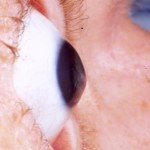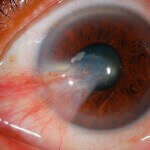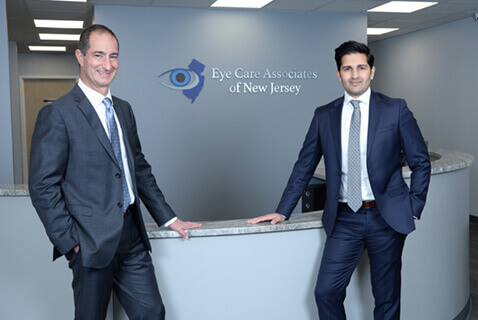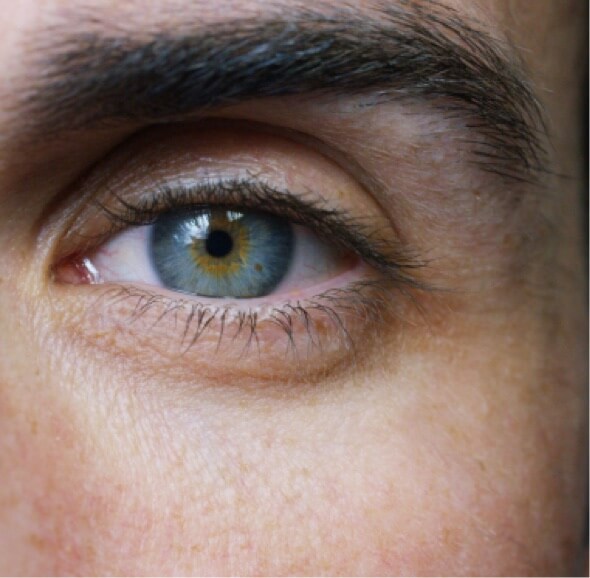Cornea Treatments
Cornea Surgeons in Bergen County
What is the Cornea?
The cornea is the front surface of the eye that allows light to enter. Its clear, thin, spherical shape helps focus the light on the retina and transmit a sharp image to your brain. Similar to the eyelid, eye socket, tears and the sclera (the white part of the eye), the cornea also helps to shield the rest of the eye from dust, germs and other harmful matters.

Any disease that affects the cornea’s shape, thickness, or transparent nature will decrease your vision.
Diseases and Disorders Affecting the Cornea
Corneal eye disease is the fourth most common cause of blindness (after cataracts, glaucoma and age-related macular degeneration) and affects more than 10 million people worldwide. Some diseases and disorders of the cornea are:

Keratoconus – A normal cornea has a rounded spherical surface. Keratoconus is a common degenerative disease that causes the cornea to be shaped like a cone. It causes substantial distortion of vision such as multiple images, streaking and sensitivity light, affecting the patient’s ability to drive a car or read normal print. While a mild case of keratoconus can be corrected with contact lenses or glasses, more severe cases can be cured with photorefractive keratectomy (PRK) and corneal transplantation.
[Photo Credit: “Keratoconus eye” by http://en.wikipedia.org/wiki/Image:Keratoconus1-800.jpg. Licensed under CC BY-SA 2.5 via Wikimedia Commons – https://commons.wikimedia.org/wiki/File:Keratoconus_eye.jpg#/media/File:Keratoconus_eye.jpg]

Pterygium – A pterygium is a pinkish, triangular-shaped tissue growth on the cornea. It is believed that chronic eye irritation and trauma from exposure to pollents, dust, sand, wind, and other environment stimuli can also add to the risk of pterygium formation. Surgery to remove a pterygium is not recommended unless it affects vision. Lubricants can reduce the redness and provide relief (see Pterygium Surgery); however, this treatment is usually not sufficient. A patient is a candidate for surgery when the pterygium affects the vision and comfort of the eye.
[Photo Credit:”Pterygium Slitlamp” by Jmvaras José Miguel Varas, MD – Own work. Licensed under CC BY 3.0 via Wikimedia Commons – https://commons.wikimedia.org/wiki/File:Pterygium_Slitlamp.jpg#/media/File:Pterygium_Slitlamp.jpg]
Dry Eyes – A condition wherein the eye produces fewer or lower quality tears. Eye tiredness, gritty or sandy feeling as if something is in the eye are the most common symptoms. Eye lubricants or artificial tears often help treat the condition. Other dry eye symptoms usually include:
- Stinging or burning eyes;
- Scratchiness;
- Stringy mucus in or around the eyes;
- Excessive eye irritation from smoke or wind;
- Excess tearing;
- Discomfort when wearing contact lenses.
Herpes Zoster Ophthalmicus (Shingles) – This infection is produced by the varicella-zoster virus, the same virus that causes chickenpox. This same virus which remained inactive (dormant) for decades may be reactivated and invade the eye and cause a wide range of eye problems. Symptoms include small, painful red blisters around the forehead and sometimes the tip of the nose, eye pain, redness, light sensitivity, eyelid swelling, cornea swelling and scarring.
Corneal Infections (Keratitis) – Symptoms usually include painful inflammation, reduced visual clarity, corneal discharges and erosion on the cornea. Often, this is caused by a foreign object, bacteria or fungi that has entered the cornea tissue. If left untreated, corneal infections can lead to corneal scarring, which can impair vision and may require a corneal transplant.

Corneal Dystrophies – This is a group of rare hereditary condition in which one or more parts of the cornea lose their normal clarity due to a buildup of cloudy material on both eyes. It causes cloudy vision, tiny blisters on the corneal surface, repeated corneal erosion, episodes of pain, severe visual impairment, and loss of vision. First line of treatment includes antibiotics, lubricating eye drops, ointments, or special soft contact lenses. If erosion continues, Supericial Keratectomy or Phototherapeutic keratectomy (PTK) may be used. In more severe cases, surgical intervention in the form of a cornea transplant (called keratoplasty) may be necessary.
[Photo Credit: “Gelatinous drop-like corneal dystrophy 1” by Klintworth GK. – Corneal dystrophies. Licensed under CC BY 2.0 via Wikimedia Commons – https://commons.wikimedia.org/wiki/File:Gelatinous_drop-like_corneal_dystrophy_1.JPEG#/media/File:Gelatinous_drop-like_corneal_dystrophy_1.JPEG
New Jersey
Cornea Surgeons
Dr. Adam Friend and Dr. Kunal Merchant










